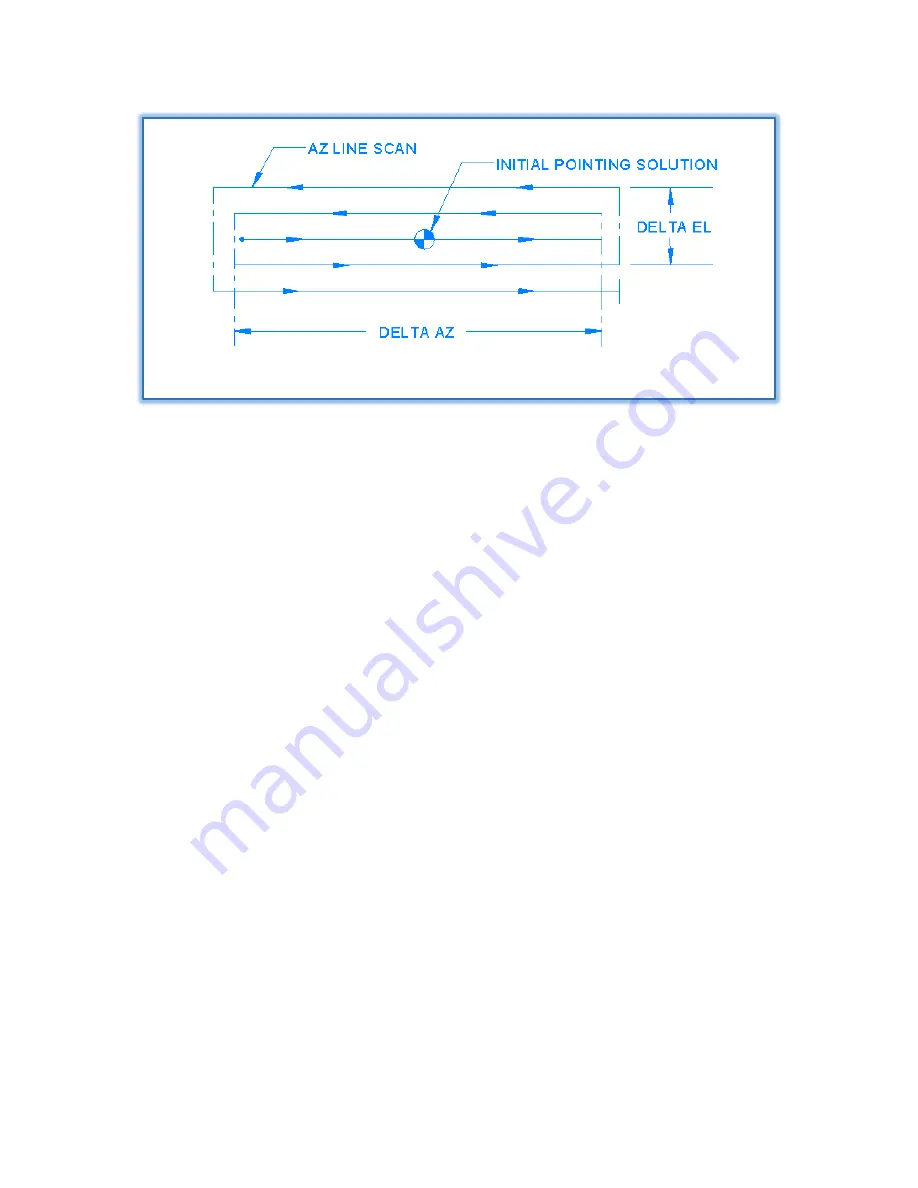
AvL Proprietary and Confidential
Content is Subject to Change without Notice
Page
160
of
195
Figure 7.4.6 - AAQ Acquisition Scan
The required AZ width parameter is substantially influenced by the accuracy of the pedestal heading
source used for acquisition purposes. The standard magnetic compass included with all AvL antenna
systems is a moderately accurate device. However, like any magnetic compass, its reading is subject
to significant errors when the antenna system is located close to large ferrous objects like metal
framed buildings and large commercial vehicles or the electromagnetic fields generated by
underground utility cables. For this reason, the AAQ’s raster scan is typically rectangular in shape,
with an AZ width that is many times larger than the EL height.
As mentioned previously, the AAQ typically acquires the target satellite on the first AZ scan. This
high success rate is due in large part to a feature called continuous tilt compensation. This standard
AAQ feature enables the antenna system to perform acquisition AZ scans at a constant World-EL
value instead of a constant Ped-EL value. In this way, potentially significant World-EL angle errors
due to pedestal tilt are eliminated near the beginning and end of the AZ scan. With this feature in
place, multiple AZ scans (additional acquisition time) and increased probability of acquiring the
wrong satellite is avoided.
The steps employed by the AAQ during satellite acquisition vary depending on the type of
acquisition signal source being used and the satellite’s position relative to the terminal’s location.
These dependencies are described in the following sections.















































